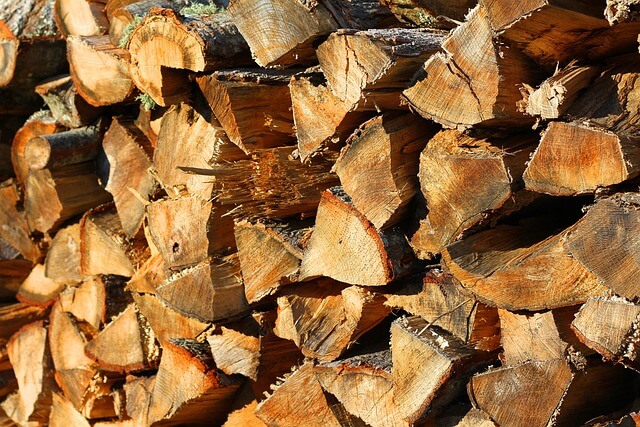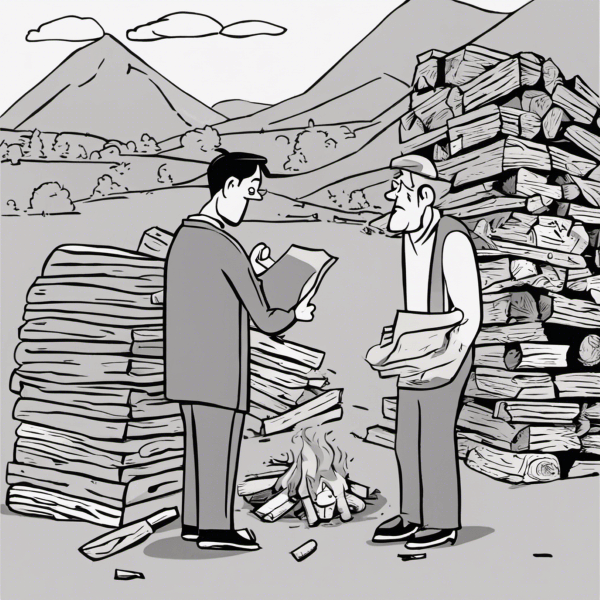Measuring firewood seems like a benign topic. But, nothing is ever that simple.
Back in 2015, The Working Forest published an article on the harvesting of fuel wood and timber in specific areas… and guess what! The fiery debate still goes on.
Measurement Canada – the experts weigh in
Evens Canadians may not know this, but there exists a federal body that administers how everything is measured has weighed in. In 2015, Measurement Canada, said federal body and a division of Industry Canada, suggested people stop buying and selling firewood by the cord.
To quote, “Measurement Canada recommends that the use of the cord as a unit of measurement be discontinued, as it is largely misunderstood and often misused by people selling firewood,” reads a statement on Measurement Canada’s website.
Measurement Canada’s firewood logic
Since the dawn of firewood, a cord of firewood has always been 128 cubic feet, or a pile four feet by four feet by eight feet. Sound simple? Well, it’s supposed to be. But if you’ve bought much firewood, you’ve likely heard terms like stacked cord and processed cord.
Those terms Measurement Canada deems illegal because they invariably refer to a cord of fuel wood that, once split into logs and stacked, measures less than 128 cubic feet of energy.
“To avoid any confusion about the amount of firewood purchased or sold, Measurement Canada recommends the use of the stacked cubic metre when purchasing or selling bulk firewood,” reads its statement.
Going over like a lead balloon
Despite Measurement Canada’s ongoing struggle to convert everything to the metric system, you’ll be hard-pressed to find any firewood sold in Nova Scotia by the cubic metre.
“Why would you change 700 years of a system of measurement because there are a bunch of scammers out there and someone is too lazy to do their job and enforce the law?” said Frank Rhyno.
The owner of Frank Rhyno’s Valley Firewood in Canaan, Kings County, is passionate about firewood measurements. The cord, its many derivations and Measurement Canada are frequent topics on the 68-year-old’s blog.
Rhyno, who sells a 128-cubic-foot cord of split firewood for over $300 (delivery not included), was not pleased to hear of Measurement Canada’s recommendation.
“Stupid,” he said of the idea.
He’s written the last three premiers asking that a measure be implemented to regulate the selling of firewood in Nova Scotia.
“What you need is that anyone who is selling firewood be registered with the province.
“There should be a sticker on their truck that identifies and tells you everything about them. And if they come into your yard and sell you a cord that isn’t a cord, you should be able to call the Mounties and have them hauled away because they’re committing fraud.”
More open-minded firewood sellers say…
Not all firewood purveyors are as strongly attached to the cord as Rhyno. Tim Laing sells split firewood in lots of 110 cubic feet — 18 cubic feet short of a cord — for over $300.
“I sell it by the cubic foot because there are only two ways you can legally sell firewood — by the cord or by the cubic foot,” said Laing, owner of Home Hardwood Firewood in Halifax.
Most of this province’s firewood processors receive hardwood in tractor-trailer loads of eight-foot logs. That load is sold to them as 16 cords.
However, there are losses during processing so Laing said he ends up with about sixteen lots of 110 cubic feet of sawed and split firewood off a tractor-trailer.
“I sell it that way because it makes the bookkeeping simpler.”
Canadian Standards for Measuring Wood in a Stack – 2023

In Canada, firewood is officially measured using the “face cord.” A face cord is one-third the volume of a full cord and has specific dimensions. It measures 4 feet high and 8 feet long, but its width can vary depending on the length of the logs.
The Canadian standards ensure consistency. By using the face cord as a standard unit of measurement, stacks of wood can be compared accurately and fairly.
Here’s what you need to know about Canadian wood measurements:
- The face cord: It is the official measurement for firewood in Canada.
- Dimensions: A face cord is 4 feet high and 8 feet long.
- Varying width: The width of a face cord depends on the length of the logs being stacked.
- One-third volume: A face cord represents one-third of a full cord.
- Consistency: The Canadian standards guarantee consistent measurements for firewood stacks.
How to find an honest firewood seller
Transparent Pricing: Look for sellers who provide transparent pricing based on accurate measurements of wood. This ensures that you get what you pay for without any hidden costs or surprises, whether you are purchasing wood furniture or any other wooden products.
Quality Firewood Check if the seller offers seasoned or kiln-dried firewood. Seasoned firewood has been dried for at least six months, making it easier to light and burn efficiently. Kiln-dried firewood goes through a drying process in a controlled environment, reducing moisture content even further and providing optimal burning conditions.
Reviews and Recommendations: Read reviews from other customers or ask for recommendations from trusted sources. This will give you insights into the seller’s reputation and the quality of their products and services.
By following these simple steps, you can ensure that you find an honest firewood seller who offers fair pricing, high-quality firewood, and has positive customer feedback. Happy wood-burning!
FAQs About Firewood
How should I store my firewood?
To properly store your firewood, make sure it is kept off the ground and protected from rain or snow. You can use a woodshed or stack it on pallets with a tarp covering it.
How long does firewood take to dry?
The drying time for firewood depends on various factors such as wood type, size, and weather conditions. Generally, it takes around six months to two years for firewood to fully dry.
Can I burn freshly cut wood?
Burning freshly cut wood is not recommended as it contains too much moisture. It’s best to let the wood dry out properly before using it as fuel.
What are some signs of seasoned (dry) firewood?
Seasoned or dry firewood typically has cracks at the ends of logs and makes a hollow sound when two pieces are struck together.
Is all wood suitable for burning in a fireplace or stove?
No, not all wood is suitable for burning. Softwoods like pine tend to burn faster and produce more smoke, while hardwoods like oak or maple burn longer and provide more heat.
How much firewood do I need for a season?
The amount of firewood you’ll need for a season depends on various factors such as your location, climate, and how frequently you use your fireplace or stove. It’s best to consult with a reputable firewood supplier who can help determine the right quantity based on your specific needs.
Where can I find reliable firewood sellers near me?
To find reliable firewood sellers near you, you can check online directories, ask for recommendations from friends or neighbors, or contact local landscaping companies or tree service providers who often offer firewood for sale.
